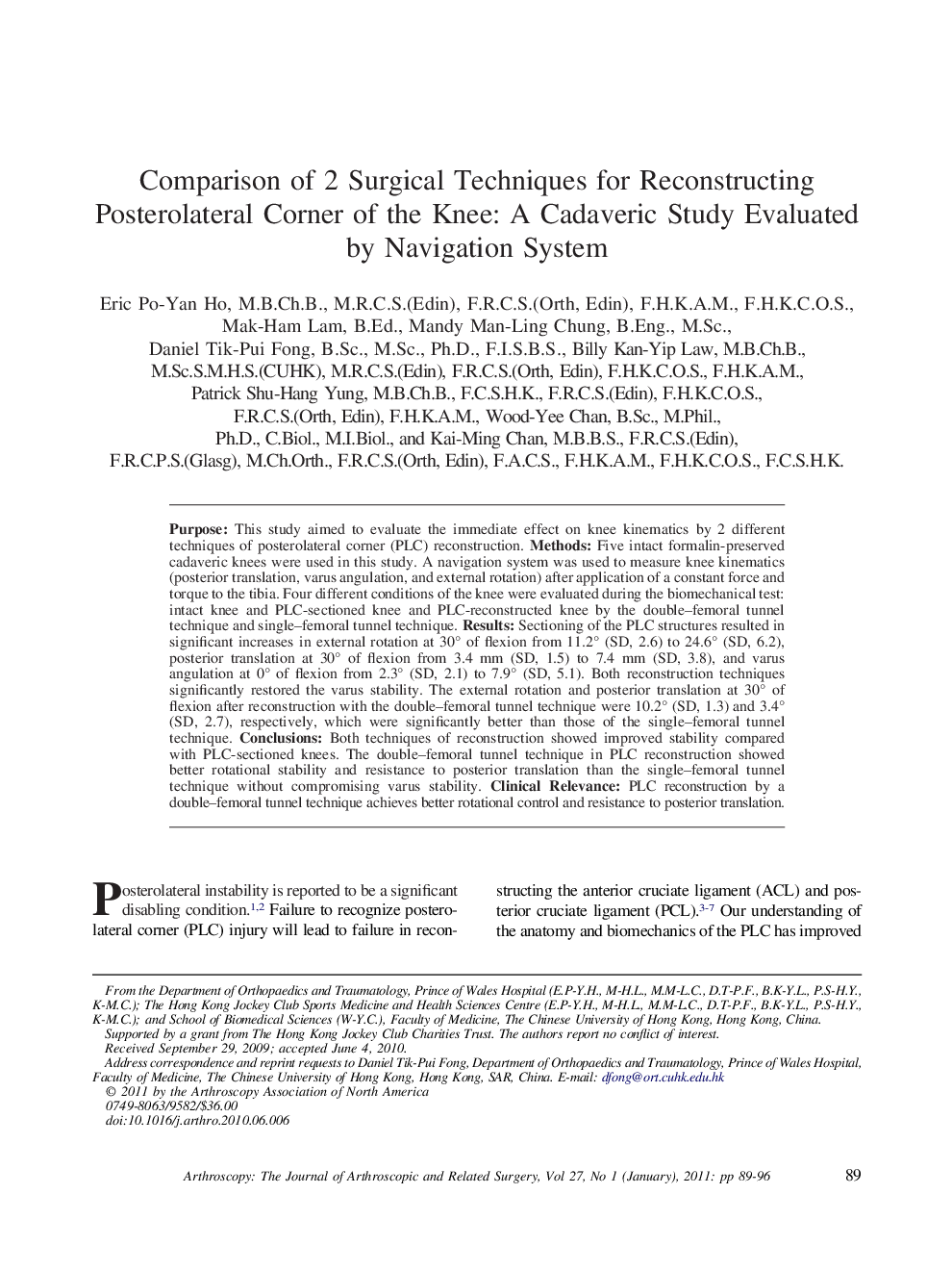| Article ID | Journal | Published Year | Pages | File Type |
|---|---|---|---|---|
| 4045770 | Arthroscopy: The Journal of Arthroscopic & Related Surgery | 2011 | 8 Pages |
PurposeThis study aimed to evaluate the immediate effect on knee kinematics by 2 different techniques of posterolateral corner (PLC) reconstruction.MethodsFive intact formalin-preserved cadaveric knees were used in this study. A navigation system was used to measure knee kinematics (posterior translation, varus angulation, and external rotation) after application of a constant force and torque to the tibia. Four different conditions of the knee were evaluated during the biomechanical test: intact knee and PLC-sectioned knee and PLC-reconstructed knee by the double–femoral tunnel technique and single–femoral tunnel technique.ResultsSectioning of the PLC structures resulted in significant increases in external rotation at 30° of flexion from 11.2° (SD, 2.6) to 24.6° (SD, 6.2), posterior translation at 30° of flexion from 3.4 mm (SD, 1.5) to 7.4 mm (SD, 3.8), and varus angulation at 0° of flexion from 2.3° (SD, 2.1) to 7.9° (SD, 5.1). Both reconstruction techniques significantly restored the varus stability. The external rotation and posterior translation at 30° of flexion after reconstruction with the double–femoral tunnel technique were 10.2° (SD, 1.3) and 3.4° (SD, 2.7), respectively, which were significantly better than those of the single–femoral tunnel technique.ConclusionsBoth techniques of reconstruction showed improved stability compared with PLC-sectioned knees. The double–femoral tunnel technique in PLC reconstruction showed better rotational stability and resistance to posterior translation than the single–femoral tunnel technique without compromising varus stability.Clinical RelevancePLC reconstruction by a double–femoral tunnel technique achieves better rotational control and resistance to posterior translation.
